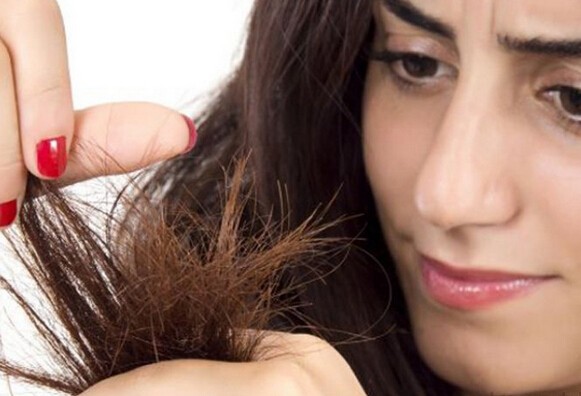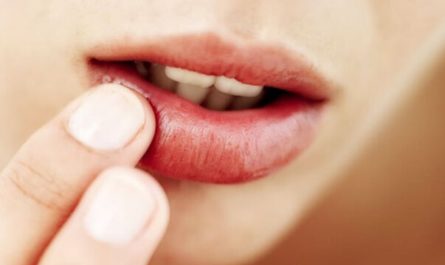Split ends can be a major frustration for anyone striving for healthy and beautiful hair. These pesky damaged ends not only make your hair look frizzy and unkempt but also hinder its growth. But fear not! In this comprehensive guide, we will explore the causes of split ends and some effective strategies to banish them for good.
What are Split Ends?
Split ends, also known as trichoptilosis, occur when the protective outer layer of the hair shaft, called the cuticle, wears away or becomes damaged. This damage causes the hair strand to split into two or more fragments, giving it a frayed and ragged appearance. Split ends can happen to anyone, regardless of their hair type or texture.
What causes split ends?
Split ends occur when the protective outer layer of the hair cuticle gets damaged, leading to the splitting of the hair shaft. Here are some common causes of split ends:
- Overexposure to heat: Excessive use of hot styling tools such as hair dryers, curling irons, and straighteners can strip away moisture from the hair.
- Chemical treatments: Harsh chemical processes like perming, relaxing, and coloring can weaken the hair structure, leading to split ends.
- Mechanical damage: Vigorous brushing or combing can cause the strands to stretch and break, resulting in split ends. In addition, Using low-quality hair accessories or styling tools can also contribute to mechanical damage.
- Lack of moisture: Insufficient hydration and moisture in the hair can make it dry and brittle, making it more susceptible to splitting.
- Rough handling: Rough towel drying can damage and breakage along the hair shaft.
- Environmental factors: Exposure to environmental pollutants, UV rays, and harsh weather conditions can weaken the hair’s structure.

10 Effective Natural Remedies For Split Ends
1. Nourishing Avocado Hair Mask
Avocado is a fantastic natural ingredient for nourishing and repairing damaged hair. Avocados are rich in healthy fats, vitamins, and minerals that promote hair health. The high-fat content in avocados helps moisturize and smoothen the hair, reducing the appearance of split ends.
- Mash a ripe avocado until it becomes a smooth paste.
- Add a tablespoon of olive oil to the mashed avocado and mix well.
- Start with clean, damp hair.
- Apply the avocado mixture from the roots to the ends of your hair, ensuring thorough coverage.
- Gently massage the mixture into your scalp to stimulate blood circulation.
- Leave the mask on for 30 minutes to allow the nutrients to penetrate your hair.
- Rinse your hair thoroughly with lukewarm water and use a mild shampoo and conditioner.
- Repeat this treatment once a week to keep your hair nourished and prevent split ends.
2. Moisturizing Coconut Oil Treatment
Coconut oil is renowned for its moisturizing properties. It contains lauric acid, which easily penetrates the hair shaft, providing deep hydration and nourishment. The application of coconut oil creates a protective barrier that prevents moisture loss and reduces the likelihood of split ends.
- Start with dry hair.
- Warm up a few tablespoons of coconut oil in a microwave or by rubbing it between your palms.
- Apply the warm coconut oil to your hair, focusing on the ends where split ends are most prevalent.
- Massage the oil into your scalp and work it through the lengths of your hair.
- Leave the oil on overnight for maximum absorption.
- In the morning, wash your hair with a gentle shampoo and conditioner.
- Repeat this treatment once a week to maintain well-moisturized hair and prevent split ends.
3. Honey and Olive Oil Hair Mask

Honey is a natural humectant, meaning it helps attract and retain moisture in the hair. Olive oil is rich in antioxidants and healthy fats that nourish the hair and repair damage. Combining these two ingredients can create a powerful hair mask that promotes hair health and prevents split ends.
- In a bowl, mix two tablespoons of honey with two tablespoons of olive oil until well-blended.
- Start with clean, damp hair.
- Apply the honey and olive oil mixture to your hair, focusing on the ends.
- Gently massage the mask into your scalp and hair.
- Leave the mask on for 20 minutes to allow the nutrients to penetrate your hair.
- Rinse your hair thoroughly with lukewarm water and use a mild shampoo and conditioner.
- Repeat this treatment once a week to moisturize your hair, repair damage, and prevent split ends.
4. Trim Regularly
Regular trims are essential to keep split ends at bay. While it may seem counterintuitive to cut your hair when you’re trying to grow it, trimming the damaged ends is crucial for maintaining healthy hair.
- Start with clean, dry hair.
- Use sharp hair shears or visit a professional stylist for the best results.
- Divide your hair into small sections.
- Take a small section and twist it gently.
- Examine the ends of the twist for split ends.
- Trim off the split ends, taking care not to cut off too much length.
- Continue this process for each section of your hair.
- Trim your hair every six to eight weeks to maintain healthy ends and prevent split ends from progressing.
5. Protect from Heat
Excessive heat from styling tools can cause hair damage and split ends. To protect your hair from heat, it’s essential to minimize the use of heat styling tools and employ heat protection measures.
- Before using any heat styling tools, apply a heat protectant spray or serum to your hair.
- Use the lowest possible heat setting on your styling tools.
- Limit the frequency of heat styling and opt for air-drying whenever possible.
- If you must use a blow dryer, hold it at least six inches away from your hair and continuously move it around to prevent concentrated heat.
- Use heat-free styling methods, such as overnight braiding or heatless curls, to achieve desired hairstyles without heat damage.
6. Use a Wide-Toothed Comb
When detangling your hair, opt for a wide-toothed comb instead of a brush. Brushes can cause breakage and lead to split ends, especially when used on wet hair.
- Start with damp hair.
- Divide your hair into sections to make the detangling process more manageable.
- Begin combing from the ends of your hair, working your way up to the roots.
- Gently detangle any knots or tangles, taking care not to pull or yank on your hair.
- Once a section is detangled, move on to the next until your entire head of hair is tangle-free.
- A wide-toothed comb minimizes hair damage and reduces the likelihood of split ends.
7. Silk Pillowcase
Switching to a silk pillowcase can benefit your hair in multiple ways. Unlike cotton pillowcases, silk reduces friction, preventing hair breakage and split ends. Additionally, silk pillowcases help retain moisture, allowing your hair to stay hydrated overnight.
- Replace your cotton pillowcase with a silk one.
- Silk pillowcases are gentle on the hair, reducing friction and minimizing breakage.
- The smooth surface of a silk pillowcase prevents your hair from getting caught or tangled during sleep.
- Silk pillowcases help retain the natural oils in your hair, keeping it moisturized and less prone to split ends.
- Invest in a silk pillowcase to wake up to smoother, healthier-looking hair.
8. Aloe Vera Treatment

Aloe vera is a versatile plant known for its healing properties. It contains enzymes that repair dead skin cells on the scalp, promoting hair growth and reducing the appearance of split ends.
- Cut a fresh aloe vera leaf and extract the gel using a spoon.
- Start with clean, damp hair.
- Apply the aloe vera gel directly to your hair, focusing on the ends.
- Gently massage the gel into your scalp and work it through your hair.
- Leave the gel on for 30 minutes to allow the nutrients to penetrate your hair.
- Rinse your hair thoroughly with lukewarm water and follow with a mild shampoo and conditioner.
- Repeat this treatment once a week to soothe your scalp, reduce inflammation, and prevent split ends.
9. Egg Mask
Eggs are a rich source of protein and essential nutrients for hair health. Protein helps strengthen the hair shaft, reducing breakage and the occurrence of split ends.
- In a bowl, beat two eggs until they become frothy.
- Add two tablespoons of olive oil to the beaten eggs and mix well.
- Start with clean, damp hair.
- Apply the egg and olive oil mixture to your hair, focusing on the ends.
- Gently massage the mixture into your scalp and hair.
- Leave the mask on for 30 minutes to allow the protein to nourish your hair.
- Rinse your hair thoroughly with cool water to prevent the eggs from cooking.
- Follow with a mild shampoo and conditioner.
- Repeat this treatment once a week to strengthen your hair, reduce split ends, and promote overall hair health.
10. Balanced Diet
Maintaining a balanced diet plays a crucial role in promoting healthy hair. Consuming foods rich in vitamins, minerals, and proteins provides the building blocks for strong and vibrant hair, reducing the likelihood of split ends.
- Protein: Include lean meats, fish, poultry, eggs, legumes, and nuts in your diet.
- Vitamin C: Eat plenty of citrus fruits, berries, kiwi, peppers, and leafy greens.
- Omega-3 Fatty Acids: Incorporate fatty fish (salmon, mackerel, sardines), chia seeds, flaxseeds, and walnuts into your meals.
- Biotin: Consume eggs, almonds, sweet potatoes, avocados, and cauliflower.
- Iron: Incorporate iron-rich foods such as spinach, lentils, red meat, and tofu into your diet.
- Vitamin E: Include sunflower seeds, almonds, spinach, and avocados in your meals.
- Drink adequate water daily to stay hydrated and promote overall hair health.
Professional Treatments for Split Ends
While home remedies can provide temporary relief, professional treatments offer more intensive care for split ends. Consider the following options:
1. Salon Services
Visit a reputable salon for a professional trim or dusting to remove split ends without sacrificing the length of your hair. Trained hairstylists have the expertise to identify and address split ends effectively. They can also guide the best hair care practices and recommend products suitable for your hair type.
2. Hair Repair Products
Look for hair repair products specifically designed to combat split ends. These products are formulated with ingredients that help seal the cuticle, reduce frizz, and provide much-needed moisture to the ends of your hair.
Serums, leave-in conditioners, and deep conditioning treatments are some examples of hair repair products that can help improve the appearance of split ends. Apply these products to the ends of your hair, focusing on the damaged areas, and follow the instructions provided for the best results.
Styling Tips to Camouflage Split Ends
While you work on repairing your split ends, you can also employ styling techniques to hide them. Here are some effective tips:
1. Hairstyles that Conceal Damaged Ends
Opt for hairstyles that strategically hide split ends. Consider long layers, textured waves, or a side-swept fringe to divert attention from the damaged ends. These hairstyles create the illusion of healthier, fuller-looking hair by adding dimension and movement.
2. Temporary Fixes
Temporary fixes, such as split-end menders or serums, can help seal the split ends, making them less noticeable. These products work by binding the split ends together, giving the appearance of healthier hair.
Apply a small amount of the product to the ends of your hair, focusing on the damaged areas. Remember, these products are not a permanent solution and should be used as a temporary fix until you can trim your split ends.
How to prevent split ends and breakage?
Here are some tips to help you maintain strong and healthy hair:
- Regular trims: Get your hair trimmed every 6 to 8 weeks to remove split ends. Regular trims will prevent the splits from traveling up the hair shaft and causing further damage.
- Gentle handling: Be gentle with your hair, especially when wet. Wet hair is more susceptible to breakage, so avoid brushing or combing it forcefully. Use a wide-toothed comb or a detangling brush to remove tangles gently.
- Condition regularly: Use a good quality conditioner after every shampoo to keep your hair hydrated and nourished. Conditioning helps to prevent dryness and reduce the risk of split ends.
- Protect from the sun: UV rays can damage hair, so protect your hair from direct sunlight. Wearing a hat or using a UV protection spray can help shield your hair from the sun’s harmful effects.
- Choose the right hair products: Use hair care products suitable for your hair type. Look for shampoos and conditioners that are sulfate-free and enriched with natural oils and proteins to nourish your hair.
- Avoid harsh chemicals: Minimize harsh chemical treatments like bleaching, perming, and coloring. These processes can weaken the hair and cause breakage and split ends.
- Use a silk or satin pillowcase: Switch to a silk or satin pillowcase, as it creates less friction against your hair while sleeping than cotton pillowcases, which can help prevent breakage.
FAQs
Q: How often should I trim my hair to prevent split ends?
A: Getting a trim every 6 to 8 weeks is generally recommended to prevent split ends. However, the frequency may vary depending on your hair’s condition and how fast it grows. If you notice split ends or excessive breakage, it may be necessary to trim your hair more frequently.
Q: Can split ends heal on their own?
A: No, split ends cannot heal on their own. Once a hair strand is split, the only permanent solution is to trim it. However, with proper care and maintenance, you can prevent new split ends from forming and minimize the appearance of existing ones.
Q: Will using hair serums and masks make my split ends disappear?
A: While hair serums and masks can help temporarily conceal split ends and provide moisture, they cannot repair split ends permanently. Trimming the damaged ends is the most effective way to get rid of split ends. However, using these products can help improve the overall appearance and manageability of your hair until you can trim it.
Q: Are split ends more common in certain hair types?
A: Split ends can occur in all hair types, but they may be more noticeable in individuals with fine or straight hair due to the hair’s texture and visibility. However, individuals with coarse or curly hair are not immune to split ends and should also take preventive measures to maintain healthy hair.
Q: Can split ends affect hair growth?
A: Yes, split ends can hinder hair growth. When split ends are left untreated, they can travel up the hair shaft, causing further damage and breakage, which affects the overall length and health of the hair. Trimming split ends regularly promotes healthier hair growth by preventing the split ends from splitting further up the hair shaft.






